New Printable Worksheets and Lesson Activities. Page 9
English Language Arts
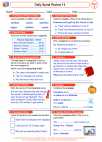
ELA Daily Spiral Review (4th Grade) provides short, daily practice activities that revisit and strengthen key language arts skills. Each day’s work is designed to take 5–10 minutes and includes a mix of topics students have already learned, so they keep practicing while moving forward.
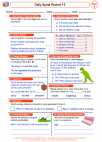
ELA Daily Spiral Review (4th Grade) provides short, daily practice activities that revisit and strengthen key language arts skills. Each day’s work is designed to take 5–10 minutes and includes a mix of topics students have already learned, so they keep practicing while moving forward.
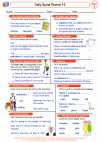
ELA Daily Spiral Review (4th Grade) provides short, daily practice activities that revisit and strengthen key language arts skills. Each day’s work is designed to take 5–10 minutes and includes a mix of topics students have already learned, so they keep practicing while moving forward.
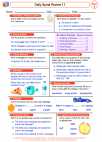
ELA Daily Spiral Review (4th Grade) provides short, daily practice activities that revisit and strengthen key language arts skills. Each day’s work is designed to take 5–10 minutes and includes a mix of topics students have already learned, so they keep practicing while moving forward.
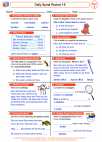
ELA Daily Spiral Review (4th Grade) provides short, daily practice activities that revisit and strengthen key language arts skills. Each day’s work is designed to take 5–10 minutes and includes a mix of topics students have already learned, so they keep practicing while moving forward.
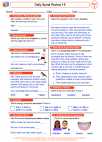
ELA Daily Spiral Review (4th Grade) provides short, daily practice activities that revisit and strengthen key language arts skills. Each day’s work is designed to take 5–10 minutes and includes a mix of topics students have already learned, so they keep practicing while moving forward.
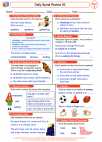
ELA Daily Spiral Review (4th Grade) provides short, daily practice activities that revisit and strengthen key language arts skills. Each day’s work is designed to take 5–10 minutes and includes a mix of topics students have already learned, so they keep practicing while moving forward.
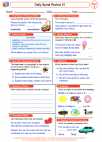
ELA Daily Spiral Review (4th Grade) provides short, daily practice activities that revisit and strengthen key language arts skills. Each day’s work is designed to take 5–10 minutes and includes a mix of topics students have already learned, so they keep practicing while moving forward.
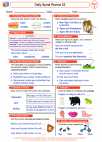
ELA Daily Spiral Review (4th Grade) provides short, daily practice activities that revisit and strengthen key language arts skills. Each day’s work is designed to take 5–10 minutes and includes a mix of topics students have already learned, so they keep practicing while moving forward.
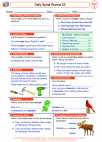
ELA Daily Spiral Review (4th Grade) provides short, daily practice activities that revisit and strengthen key language arts skills. Each day’s work is designed to take 5–10 minutes and includes a mix of topics students have already learned, so they keep practicing while moving forward.
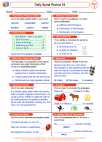
ELA Daily Spiral Review (4th Grade) provides short, daily practice activities that revisit and strengthen key language arts skills. Each day’s work is designed to take 5–10 minutes and includes a mix of topics students have already learned, so they keep practicing while moving forward.
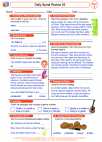
ELA Daily Spiral Review (4th Grade) provides short, daily practice activities that revisit and strengthen key language arts skills. Each day’s work is designed to take 5–10 minutes and includes a mix of topics students have already learned, so they keep practicing while moving forward.
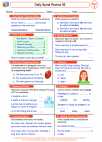
ELA Daily Spiral Review (4th Grade) provides short, daily practice activities that revisit and strengthen key language arts skills. Each day’s work is designed to take 5–10 minutes and includes a mix of topics students have already learned, so they keep practicing while moving forward.
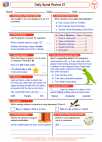
ELA Daily Spiral Review (4th Grade) provides short, daily practice activities that revisit and strengthen key language arts skills. Each day’s work is designed to take 5–10 minutes and includes a mix of topics students have already learned, so they keep practicing while moving forward.
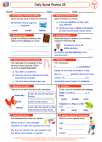
ELA Daily Spiral Review (4th Grade) provides short, daily practice activities that revisit and strengthen key language arts skills. Each day’s work is designed to take 5–10 minutes and includes a mix of topics students have already learned, so they keep practicing while moving forward.
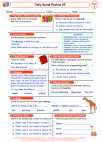
ELA Daily Spiral Review (4th Grade) provides short, daily practice activities that revisit and strengthen key language arts skills. Each day’s work is designed to take 5–10 minutes and includes a mix of topics students have already learned, so they keep practicing while moving forward.
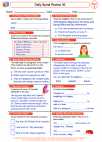
ELA Daily Spiral Review (4th Grade) provides short, daily practice activities that revisit and strengthen key language arts skills. Each day’s work is designed to take 5–10 minutes and includes a mix of topics students have already learned, so they keep practicing while moving forward.
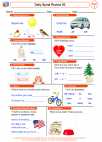
Use grammar concepts and skills that strengthen oral and written language
Use various parts of speech, such as nouns, pronouns, and verbs
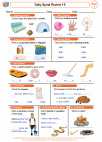
Conventions of Standard English
Demonstrate command of the conventions of Standard English grammar and usage when writing or speaking.
Use common, proper, and possessive nouns.
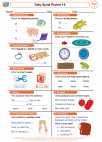
Phonics and Word Recognition
Know and apply grade-level phonics and word analysis skills in decoding words.
Know final -e and common vowel team conventions for representing long vowel sounds.